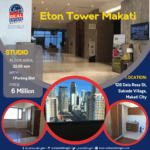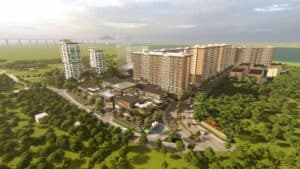
THE real estate sector has a medium risk of money laundering (ML) and terrorism financing (TF) since it is vulnerable to illegal drugs, corruption, fraud and terrorism.
This is according to the Anti-Money Laundering Council’s (AMLC) latest assessment of the real estate sector’s exposure to ML/TF/proliferation financing.
“The overall threat of the real estate sector is rated medium as the sector is exposed to illegal drugs, corruption, fraud and terrorism threats,” the AMLC revealed in the report released on Tuesday.
Based on suspicious transaction reports (STRs), ML investigations and cases; the real estate sector is more vulnerable to illegal drugs, corruption and fraud, including violations of the Securities Regulation Code.
“Criminals potentially facilitate movement and hide illegal proceeds through the purchase of or investment in real properties,” the country’s financial intelligence unit underscored. Assets are also utilized as covert hideouts for unlawful operations.
In the instance of terrorism and TF, AMLC noted that properties were reportedly used to train recruits for terrorist-related activities based on TF cases it handled.
“TF-related STRs, albeit limited, may suggest financing of terrorism activities through transactions posing as real estate investments,” the report continued.
Cash transactions, the AMLC said, subject the industry to the potential for money laundering because typologies show that using cash hides the genuine nature of the funds.
“Given the anonymous character of cash, authorities face difficulties in tracing the source of funds associated with criminal activities,” it added.
AMLC has recommended strategies that could be considered or implemented to reduce potential threats and vulnerabilities in the real estate sector.
The need to enhance the understanding on money laundering/terrorism financing risks; enhance supervision and regulatory controls, and compliance function; and promote effective coordination mechanisms and enhance enforcement actions, are among the strategies mentioned.
Continued involvement with the real estate sector, in particular, would increase risk understanding, reporting duties and know-your-customer/customer due diligence/enhanced due diligence procedures, according to AMLC.
It further said, “The AMLC should issue a report on typologies and list of ML/TF indicators, involving the sector for the guidance of covered persons and the public.”
Supervisory agencies and regulators must also undertake or update their own ML/TF risk assessments in regard to cross-sector concerns that could affect the real estate sector.
As the primary anti-money laundering/counterterrorism financing (AML/CTF) regulator, the AMLC must also monitor online AML/CTF registration and compliance and take necessary legal action if nonregistration or noncompliance occurs.
“The AMLC should monitor and ensure that real estate brokers and developers comply with the AML/CTF regulatory issuances consistent with risk-based applications,” it underscored.
As covered persons, real estate agents and developers shall offer assistance and communicate with appropriate and competent authorities if the sector is the subject of an inquiry.
“This is to ensure that the sector will not be used and abused by criminals and terrorists,” it added.
Finally, it said AMLC and other supervising agencies, as well as appropriate government agencies, should issue guidance to their respective regulated covered persons, instructing them to take appropriate measures and take into account the results of the sector review assessment when applying risk profiling to the real estate sector.
Article and Photo originally posted by Manila Times last July 14, 2021 and written by Mayvelin U. Caraballo.







More Stories
Vista Land Celebrates 50 Years with Sandiwa: An Event Honoring Leadership, Legacy, and the Filipino Dream of Homeownership
Vista Land Celebrates Love Month in Ilocos Region
Vista Land Bridges Cebuano Heritage and Progress with Valencia by Vista Estates